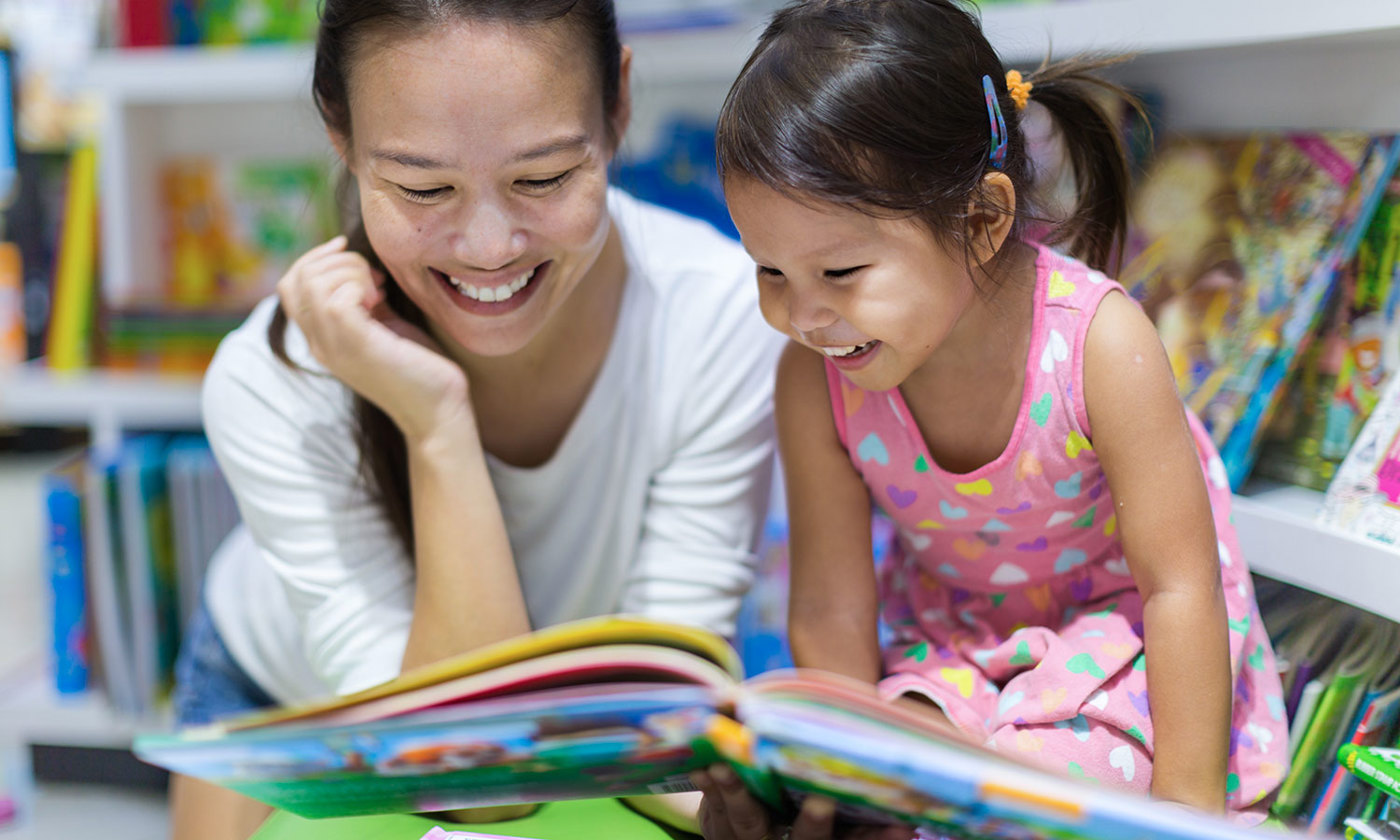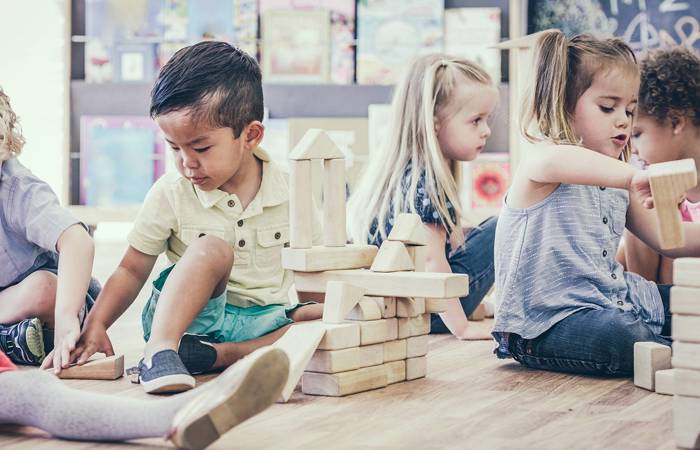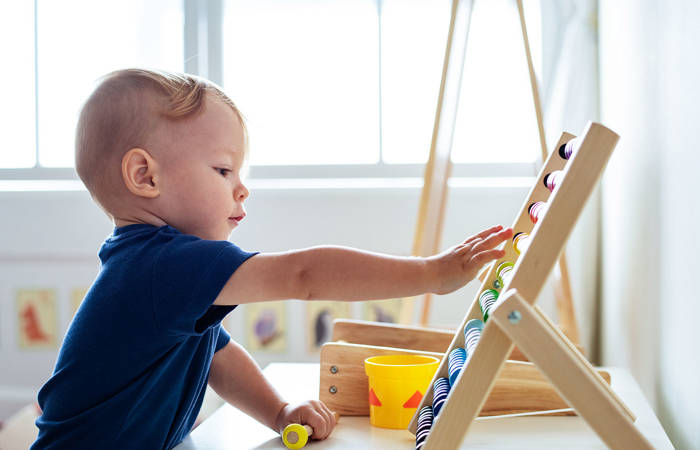Like what you see?
Sign up to receive more free parenting advice.
Thank you for subscribing to our newsletter!
Early Learning

Credit: iStock.com/globalmoments
Everyone, including our children, has preferences or aptitudes for certain activities over others.
In early learning environments this might mean some children gravitate to the traditional reading corner to immerse themselves in books, some prefer to build or construct things and some are happiest in nature, exploring and using their imaginations.
But more than likely, most children’s preferences will change depending on the day, their mood and what activities are available to them.
More than two decades ago, there was a tendency to focus on “learning styles” as a way to categorise students and this was incorporated into teaching practice.
Some of the most well-known research into learning styles came from researchers Neil Fleming and Colleen Mills from Lincoln University, Canterbury, New Zealand, who coined the acronym VARK when they categorised learners into the learning styles of Visual, Auditory, Reaching/Writing or Kinesthetic.
In fact, a lot of parents might be familiar with some of the more common “learning styles” and might have been told at one time or another that they’re a visual, auditory or a kinesthetic learner.
However, a number of Australian and international researchers have debunked learning styles, declaring them a neuromyth.
So, how can we move past learning styles and help foster children’s love of learning in their first five years and beyond?
Dr Dan Cloney is a Senior Research Fellow in the Education Policy and Practice Program and a Member of the Centre for Global Education Monitoring at the Australian Council for Educational Research (ACER). He is also on the Australian Government’s newly established Preschools Outcomes Measure Expert Advisory Group.
Dr Cloney says “learning styles” was a convenient way to categorise children, but is not relevant to today’s teaching practice, or home environment.
“The idea of learning styles wasn’t based on rock solid research but rather just observations that people made that provided a convenient way of categorising children and our observations of them,” he says.
In the last 25 years there has been a much stronger focus and rigorous research into the science of learning and the causal change, so what causes children to have better outcomes - the things that strengthen children’s learning.Dr Dan Cloney
Stay up to date with the latest news and articles from First Five Years
Thank you for subscribing to our newsletter!
A modern, more holistic approach to learning
“In the last 25 years there has been a much stronger focus and rigorous research into the science of learning and the causal change, so what causes children to have better outcomes - the things that strengthen children’s learning,” he says.
“We know what strengthens a child’s learning is quality pedagogy and access to good quality early learning and child care,” he says.
Rather than focusing on particular “learning styles,” today’s best practice in early learning environments is holistic and uses multiple modalities, says Dr Cloney.
“The dominant perspective now is that children learn holistically and there are discrete domains in terms of that holistic learning,” Dr Cloney says.
These domains include:
- Academic and pre-academic skills like reading and mathematics.
- General cognitive skills like problem solving and executive function.
- Social and emotional skills.
“It is true to say that we need to develop in all those separate areas to be successful in life,” Dr Cloney says.
Parents can use this perspective at home to expose their children to multiple learning opportunities that touch on the domains of holistic learning, and in most cases, you’re probably already doing it without even being aware of it.
“One great aspect of Australia’s early childhood system is good recognition of parents and households as first teachers and in the Early Years Framework, which is the national curriculum guide, there is a strong focus on partnerships between families and early learning settings,” Dr Cloney says.
While it is certainly true that all children, like their parents, have strengths and limitations, it is about recognising these in both their early learning setting and at home and using a strengths-based approach to encourage and support their learning.
“This plays out at home quite naturally, generally parents will do the things their kids enjoy, but it is really in consultation with their children’s educators that they can start thinking about what particular strengths can I focus on and what areas can I be supporting my kids to grow in?,” Dr Cloney says.
“There is no magic activity that will support kids to grow in all of the areas they need to all at once,” he says.
Instead, excellent early education focuses on an awareness of what children can do in each of the domains of pre-academic, cognitive and social emotional, and knowing what kind of interactions would support their growth in each of those domains, based on each child’s individual strengths.
An example would be a teacher, who knows a child has strong literacy or pre-literacy skills, but isn’t confident in their social and emotional skills, could set up an interaction where that child helps another child navigate a book or tell a story, using their strength in literacy to support their social and emotional growth.
Help develop your child’s interest in learning
Setting up an open and two-way relationship with your children’s educators is key to gaining the greatest understanding of your child’s strengths and areas of improvement and the general level they are at within the learning domains of pre-academic, cognitive and social emotional.
Once you understand the level they are at, what they excel in and what they need to work on, you can then tailor your home interactions to suit.
“We certainly don’t want our parents to be teachers and we should always understand that teaching is a clinical expertise that you spend four years at university to learn,” Dr Cloney says.
“But taking a community approach to education and knowing from your child’s educator what their strengths are and where they can grow more, can help you take a strengths-based approach to your child’s learning, taking into account a range of, or multiple modalities.”
Multiple modalities, refers to all of the different elements or activities an educator might draw upon to facilitate learning.
“In an early-years setting you’ll often see a sand play table or a sandpit, a water play table or water activity, a natural environment and then you might see more traditional tables and chairs or blocks and books,” Dr Cloney says.
Multiple modalities at home might be thinking about the skill of reading and aligning the kind of books you have at home to the level your child is working within in their early learning setting.
Then building on that and spending time with your child not only reading the book, but also discussing it, talking about what they understood happened in the story and what they think will happen next.
“It is targeting the interaction, in this case the book, at the right level and then not just reading the book, but having a meaningful interaction about the story,” Dr Cloney says.
In an early learning environment, children will experience a mix of free play and educator led and directed learning practice.
“This is also certainly true for home and actually happens quite naturally, because there are times when children are free to play and there are times when particular things need to be done around the home and these things can be done in a playful way that is also oriented around learning,” Dr Cloney says.
“For example, the traditional examples might be caring for a pet, helping with work in the home like dishes or cleaning the floor. These things can all be done in a playful way that is oriented around learning,” he says.
“If they are done with the parameters of, what are we doing? What are we trying to achieve? Why are we trying to achieve it? This is different from free play, but also an element of a child’s learning.”
Providing your children with holistic, strengths-based learning opportunities at home:
- Build your relationship with your child’s educators to understand where their strengths lie and what domains you need to support.
- Provide the opportunity for lots of free play at home.
- Involve your child in home work like the dishes, caring for pets or other jobs and make them fun, but explain what you will be doing, why you’re doing it and what they’ll learn.
- Provide activities like painting, or books to read, or other games, but join your child and do them together, engaging them in the process.
- Focus on their strengths and use them to help build on the areas they find challenging.







